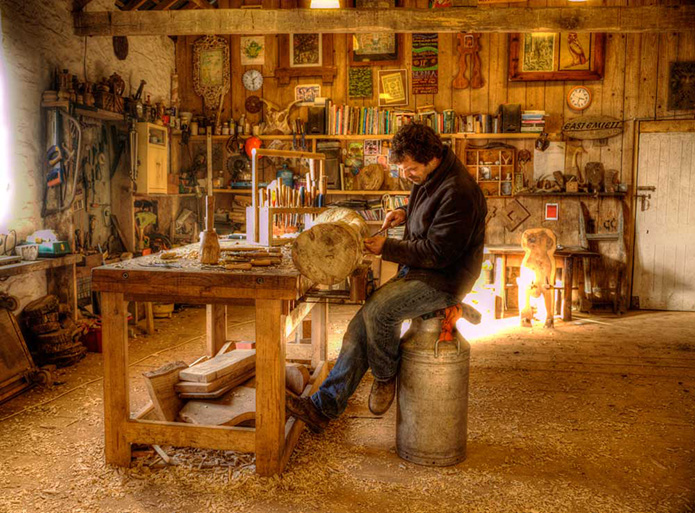
Working with wood to create objects of use, from pre-historic fire starters and spears, to rudimentary wheels and timber-framed structures, is age-old. Humankind has demarcated itself as unique within the animal kingdom, by instinctively fashioning tools to aid and enhance our life experience from the raw materials that surround us, most notably wood. However, it is not just simple functional wooden objects that, through the ages, mankind has designed, as, often, the wooden tools have been decorated, superfluously one could unromantically say, with carvings and detail, as, as well as this, non-functional objects have been pain-stakingly created; some simply decorative, some erotic, some sacred, but all meticulously fashioned to reflect the inherent creativity and the need for beauty and pertinent symbolism within the human spirit.
Ancient societies all over the planet; Egyptians, North American Indians, Arabs and Aborigines, to name but a few, have, over the millennia, evolved their uses of wood, both practical and artistic. More recently, relatively speaking, during the Middle Ages ecclesiastical buildings were full of wood carvings of iconic Christian imagery, demonstrating extremely high levels of craftsmanship and extra-ordinary artistry to form wood into unbelievable shapes and levels of detail. ‘Fast-forward’ through to the 18th and 19th centuries, and we all recognise familiar names like Chippendale and Hepplewhite, professional wordcarvers of intricate furniture through to grand architectural carvings, but by the mid 20th Century, traditional woodcarving workshops were on the decline and the number of woodcarvers making a living from the craft has fallen rapidly in recent years, as those that have retired aren’t being replaced by younger generations.
One exception is Paul Cook. As a self-confessed artist, rather than craftsman (he also draws and writes), he is a naturally inspired woodcarver, using local Devon grown and seasoned hardwoods, such as oak and holly.
Paul uses hand tools, such as self-made applewood mallets and a selection of revered chisels, and is heavily influenced by the beautiful, bountiful setting of his workshop to create commissions such as ornate crosses for local churches or organically evolving designs such as a mulberry St Mellangel, the patron saint of small animals (notably rabbits and hares), which started out as a ‘he’ and morphed into a ‘she’ as the carving continued! Paul shares with us insights into the life of a woodcarver in the 21st Century. We hope you enjoy reading…
Firstly, first those readers that aren’t familiar with Paul Cook and WoodArtWords, please can you explain what you do?
I am a Devon-born, naturally inspired woodcarver. My pieces, either relief or in the round, are carved by hand from locally-sourced, well seasoned or ancient hardwoods. I also write poetry and draw; woodartwords is a name I came up with some years ago to describe what I do.
How did you learn your skills; was it through a formal training scheme or apprenticeship, or did you find your way into crafts through another route?
About ten years ago I was given a set of five small carving chisels. I had already started making some chairs and bookshelves from wood I had rescued as a builder from some old Devon barns and had recently met a now good friend who has a sawmill.
At this time I drew regularly and after dabbling years earlier was continuing to teach myself the basic principles of creating ornate knotwork. I started carving the way I still prefer to work now. Chose a piece of wood, looked at it for a while then just started with no real plan. Draw a bit, carve a bit, look a bit and so on. The grain and natural qualities of the wood guiding me. I ended up with a sort of tricephalic Green Man with birds and trees.
By the end I was hooked and quickly started the next project. I gathered more chisels and wood and kept on carving, gaining experience with different woods and perfecting techniques, learning all the time, not least by mistakes.
What is it about working with wood that appeals to you, and what sort of feeling do you have when you are carving or making a piece?
Wood as a material I find comfortably, reassuringly real. You can feel it was a living thing; it seems to want to be something, to live again as a usable object or as a tactile piece of art. If I know where the piece comes from (I often do) this affects how I look at it and where it leads me to carve. When I am chipping back the layers of a piece I am often as lost as if I were deep in the woods with no idea where I am going. I will stand back and walk around till I see the next pathway to follow. Some carvings include trees, alone or grouped, with tracks between them deep and shadowy. I love the idea of carving wood back into trees. I love been lost in a carving where hours, days and weeks fly by and nothing else matters but the piece. The thought of the end and the overcoming all the stages to get there.
What are the most important tools that you use?
I have two different sized apple-wood mallets that I made. These, along with my chisels, most of which are old and passed to me from another carver, have been used on every piece I have made. In fact, besides some rifflers and sandpaper to finish, I rarely use anything else. Of course if I need to cut a plank or log to size I may use my chain or hand saw and I may occasionally use a drill where circular holes are required. I never use a router or any powered chisels or ‘Dremmel’ sort of grinding bits. Although they would make life easier and speed up things I just don’t like the idea of using them. Partly I suppose for the fear of removing too much material too soon and missing something in the wood. A couple of years ago I brought a reverse grinder with felt honing wheels. Along with my water grinding wheel, it helps to maintain a good cutting edge on all my chisels and has enabled me to carve more intricately because of this.
Your workshop is situated within a group of old farm buildings; does your immediate working environment influence your work in any way?
I am lucky to have a beautiful workshop in a beautiful place. The buildings are old, interesting and are full of character. The place and the wildlife in and around it are a constant inspiration to me. Either looking out the window or walking the dog before I start the day’s work, I am surrounded by beautiful Devon countryside and all the wildlife it supports. The flora and fauna that abound here are a constant source of joy and inspiration.
I carved a five foot tall holly cross the first year I was here. On it were wrens, which hunted for spiders in the wood stack. Woodpeckers that drum in the old Oak. Swallows that nested in the end of the workshop. Hawks and rabbits that frequent the fields and woods all around. The knotwork that twists and turns never ending throughout the piece, reflecting the continuity of nature’s cycles.
You create art out of wood for your living using craft techniques; do you consider yourself an artist or craftsman, or mixture of both?
I consider what I do to be an art rather than a craft. Part of this being the processes involved in creating each piece. Having to be in tune with the piece and ‘in the zone’ to actually see it through. The near obsession and determination to finish a three month or longer piece, the being able to think of nothing else, reminds me there is only one letter between artistic and autistic.
Can you briefly talk us through the process of how you create one of your pieces?
If I want to start a new carving but am not sure what, I look through my wood store until a piece jumps out (not literally). I may see a piece in a different light or a character of it is revealed that I hadn’t noticed before. When the piece is upstairs on the workbench I walk around it a bit, turning it to see the light and shadow from different angles.
Usually a vague idea of something springs to mind, from a suggestion of something within the wood. When I start to carve, the properties of the grain and character of the wood lead me on. The more I carve the more I see, the more I’m shown the more I carve; it’s like a vicious circle of creation. Once I get to the stage of really knowing where I’m going I’m absorbed in it, nothing else matters. The light at the end of the tunnel shines bright and I strive towards it.
When I have got to a stage of the carving I am happy with I will use rifflers to remove unwanted chisel marks and grades of sandpaper to reach the desired smoothness.
I finish my pieces with natural oils and waxes to bring out the colours of the grain and seal the wood. My favourite part of the process is applying the oil and watching the piece come to life. If I am carving a commission, this method changes somewhat as I may have to design something first and find the right wood to suit the piece.
How do you select the wood that you use, and do you have any preferred wood?
For commissions this can vary if the client wants to be involved in choosing or has a certain piece or type of wood in mind, or if a certain type is more suited to the piece to be carved. If I am selecting wood for myself it could be anything from the wood store.
Of all the woods I have used, I enjoy carving oak for it has depth of character and a richness and interest in the grain patterns and burrs. I also admire greatly the carvers of old that created all the beautiful bench ends and roof bosses of our churches from oak. The smell of oak chips evokes memories of childhood watching the men planking oak on the old belt saw and stacking oak logs into the woodshed.
This said though, my favourite wood I have carved to date is holly. It is dense and tough and carves beautifully. When seasoned well it is white and has an almost ivory quality when fine sanded and waxed. All three of the ornate crosses I have carved, including the one in Credited church, are from holly.
You’re also a musician; does your love of music inter-twine with your craft of working with wood?
I am in a band but unfortunately don’t play any instruments, but sing. Most of the songs coming from poems; some of which were first penned whilst in the process of carving.
When deep into a carving it is not unusual for words to come – a rhyming couplet or two, or just odd lines or ideas. I always have paper and pencils handy on the bench for these moments. I listen to music almost constantly while carving, sometimes finding myself carving in a rhythm that matches the tempo of whatever may be playing. Reggae, blues, folk or classical – it all helps me immerse myself in the wood. Time goes by in CD’s and tapes rather than minutes and hours.
What type of projects do you enjoy working on the most?
My favourite types of projects are when I have the time to just choose a piece of wood and carve. When I do this, without the background worry of pleasing a client or meeting a criteria, I just put on some music and carve; no plan, no idea where it’s going. It’s usually a few hours in when I can start to imagine what it might be or how the piece may turn out. Some such projects have taken three months to complete. Others were started for a few weeks then put aside as inspiration waned or more pressing projects arrived. Anything from a week to a couple of years may pass before picking up where I left off.
I have a body of work carved over the last six years created in this manner including Melangell the patron saint of Hares. One wet day in January this year when I should have been chain sawing outside, I decided to put my time to good use and start a new carving. A piece of mulberry that I was given a few years ago caught my eye and the project began. I thought that the piece with a fork at the top could maybe be a figure carrying something on their shoulder. I spent the rest of that day creating a lumpish manly head and shoulders and the suggestion of a rabbit or hare where a split in the wood created a sort of cloak effect. More heavy rain the next day led me to carry on and by the end of that afternoon I had an almost saintly-feeling male figure with a definite hare beneath a not-so-definite cloak. The fork in the wood left a protrusion from the back that I was unsure how to use for best effect. But as usual I thought I would just plod on and cross that bridge when I came to it. Knowing the more time I invested in the piece the less likely I would be not to finish it. The grain seemed to be leading me, so that night out of interest I Googled “saints of animals” wondering If perhaps I was unwittingly carving one and came up with Francis of Assisi, although most images had him portrayed with birds and I found none with hares.
The next day I was eager to carry on; the rain had stopped and I had other things to do but I was gripped and needed to finish this piece before I could consider doing anything else. I continued been led and quite soon it became apparent this figure was to be female; not what I had imagined yesterday at all and still no idea how to deal with the hunch back. By the end of that day it was definitely a woman but still had a saintly feel; I’m not sure why, something in the stance maybe, or the pale buttery colour of the wood. An Irish friend of mine, who had called in that day, felt sure he had heard of a female saint who had a connection with hares. I was intrigued and thrilled to hear from him later that evening with news of a Melangell, Patron saint of hares.
I had a name for the ever-changing face, and equipped from the internet with the legend of her story, I carved on, eventually deciding she could be carrying firewood, something someone living a remote hermits life must have had to do. This hopefully would utilize the fork in the log. Some weeks later I finished, gave her a couple of coats of beeswax polish mounted her on a piece of oak and finally got back to the other things I should be doing.
Is there any symbolism to the work that you are creating; anything you are trying to communicate?
I hope a sense of my love of nature comes through in my work and a respect for the natural beauty of wood; using the properties of the wood as a guide and not trying to force it into something it doesn’t want to be. As I said earlier, the concept of carving wood back into trees is one I enjoy. Along with the knot-work and the three joined creature symbols it shows the idea of nature’s continuity and the cycles within that we all are governed by.
Chipping away at a bit of wood is timeless – like the waves chipping away at the shore, and the hours chipping away at our lifetimes. It also feels like a connection with the past, as the tools and techniques to my way of carving have changed little for hundreds, maybe thousands of years. The very old wood of the Domesday carvings has a rich patina and aura of age that is reassuringly solid and real. A reminder of the past and a hope for the future; an optimism that we can live more natural, less destructive lives.
I intentionally leave some of the marks of making. A chisel mark or riffler scratch that could be seen as an imperfection is in fact just part of the story of the piece. A little glimpse of the processes that have occured, a statement that a man with hand tools, not machines, created this work.
Do you have any advice for anyone thinking about starting to carve, either as a hobby or career?
From my experience starting as a hobby would have to come first; carving is not for everyone and I think you would soon discover if you had the passion and capability to turn it into a career. Like me, you could get some chisels and wood and just try, or look for a local carver offering tuition; I think there are bound to be classes and courses available.
I’m sure there are numerous internet sites offering advice and demonstrations and the good old fashioned book is still to be found on the subject in various outlets. Whichever option, I would say follow the wood and your heart wherever possible; find a style that suits you and don’t be put off by mistakes but learn from them.
What plans do you have for the future?
I hope to continue to have interesting and challenging commissions and also to add to my body of work to exhibit. I have many bits of wood I am waiting to carve and many ideas of what they might be.
I also hope to continue to enjoy and explore all the beautiful pathways that weave through the lovely wooded hills and valleys of my surroundings and continue to be inspired by what I see.
Thanks to Paul Cook for taking time out of his busy schedule to answer our questions. To reach Paul to commission a project or simply for more information, please visit Paul’s website by clicking the link below:

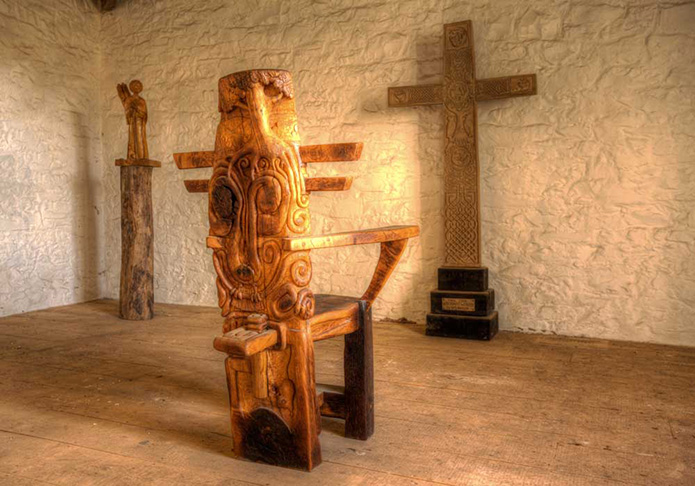
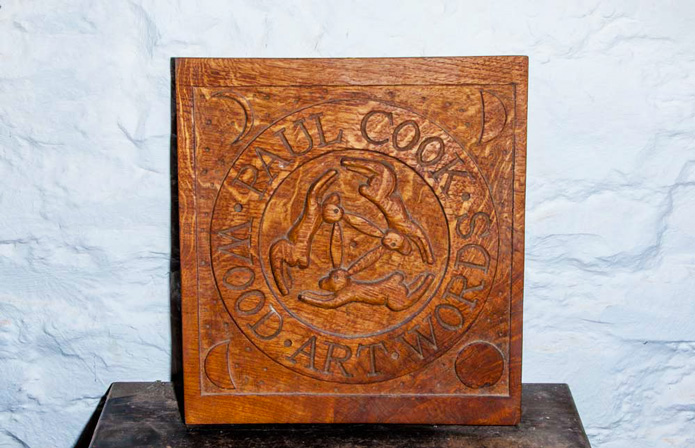
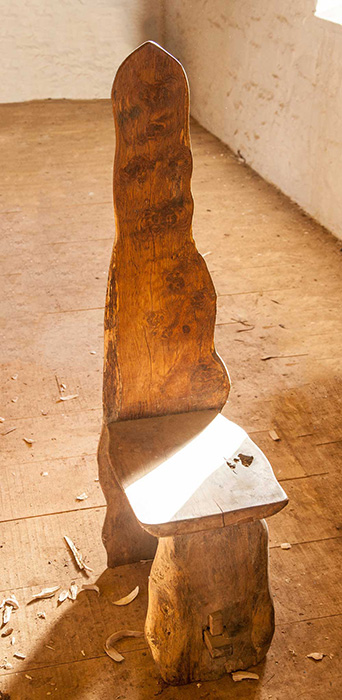
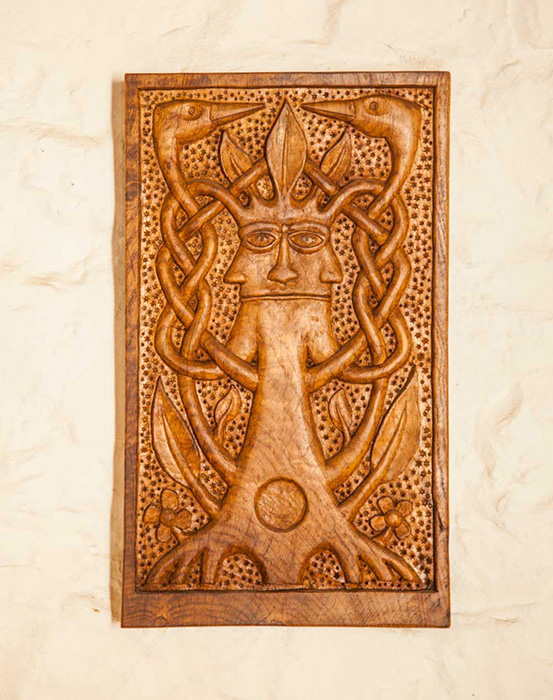
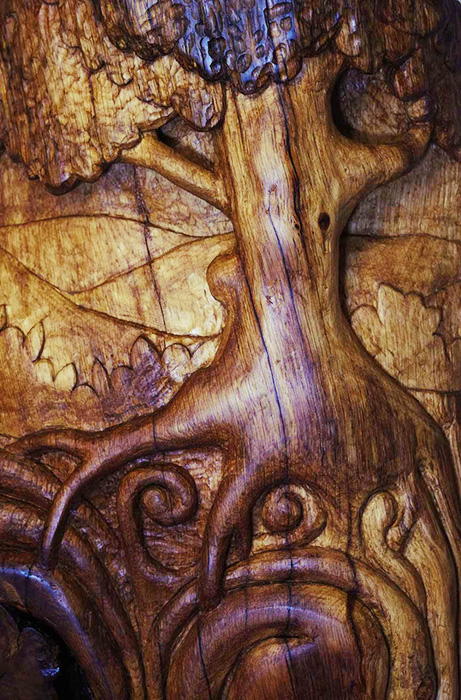
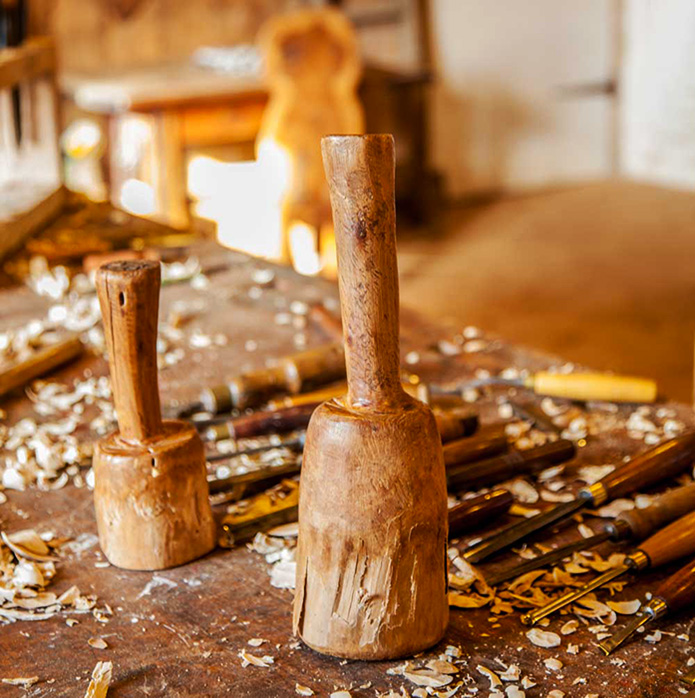
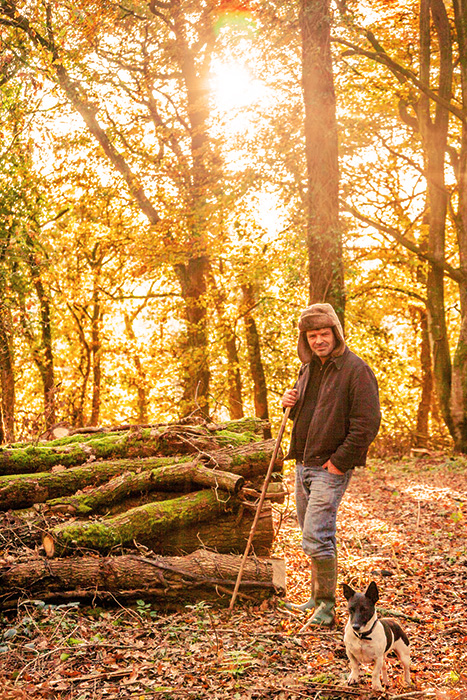
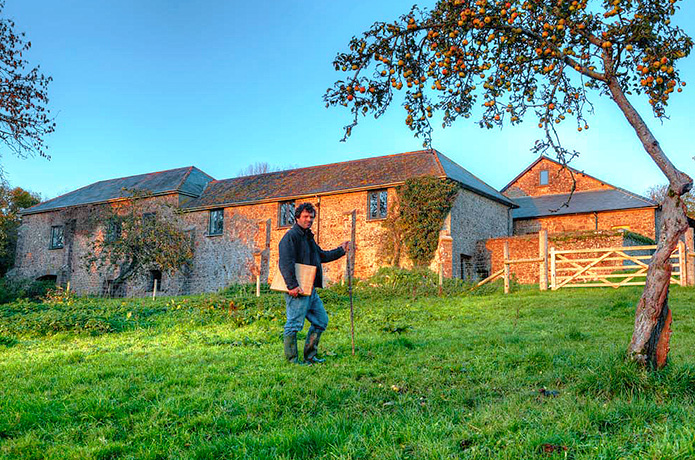
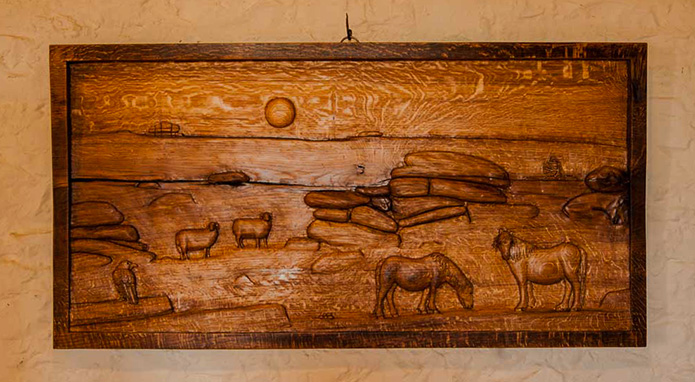
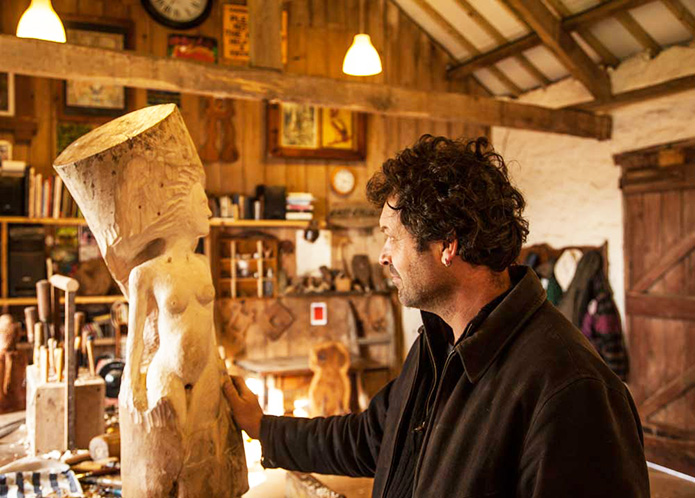
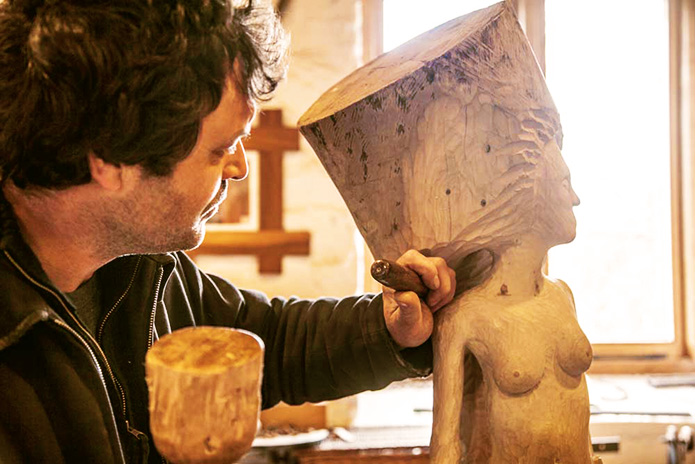
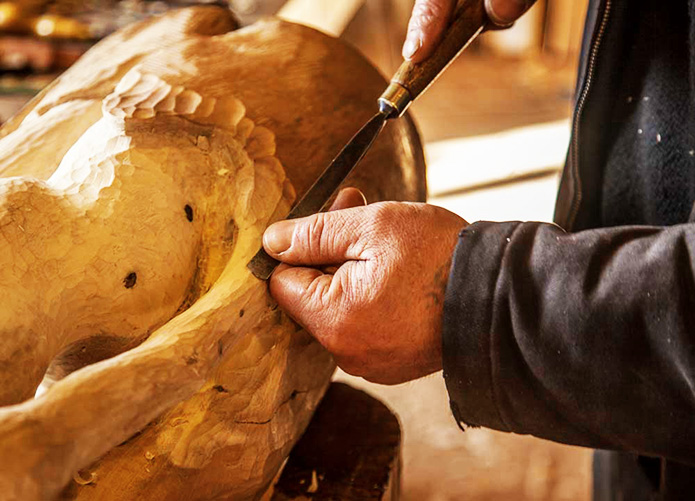
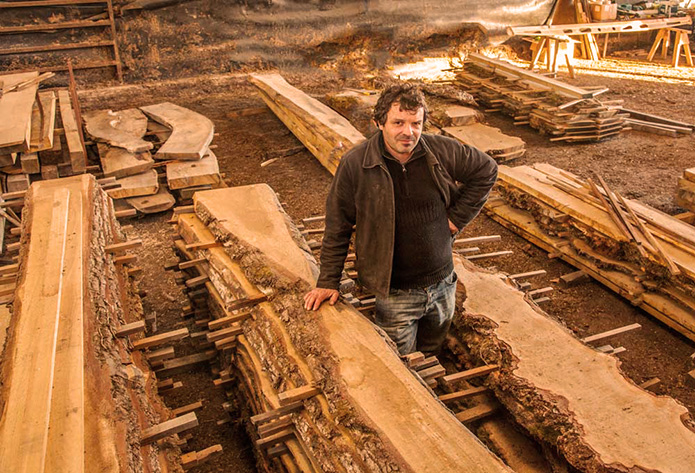
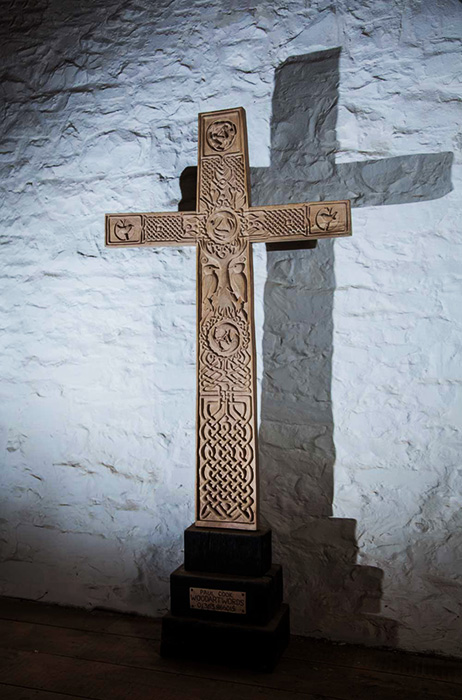
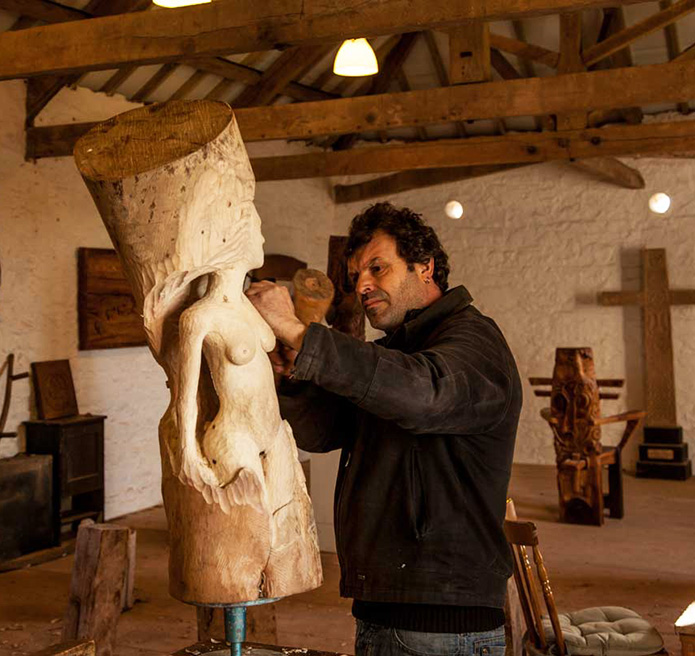
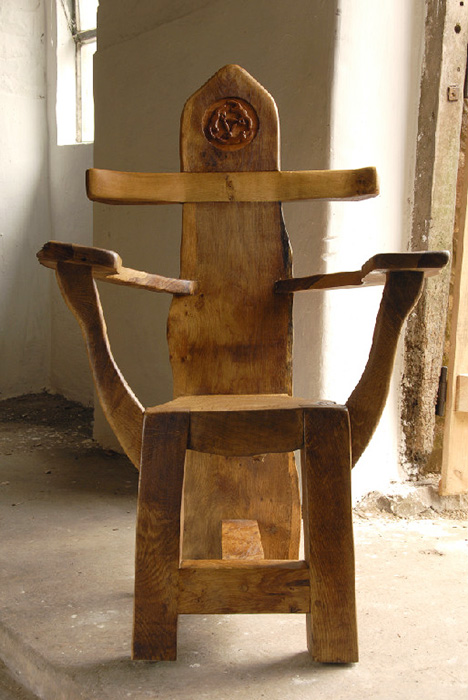
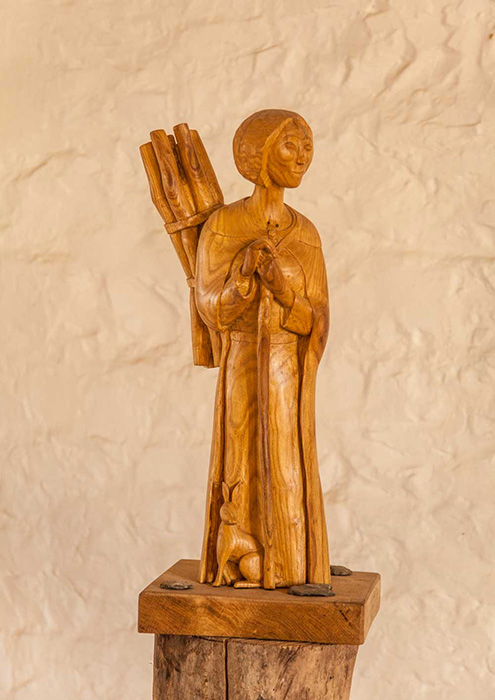
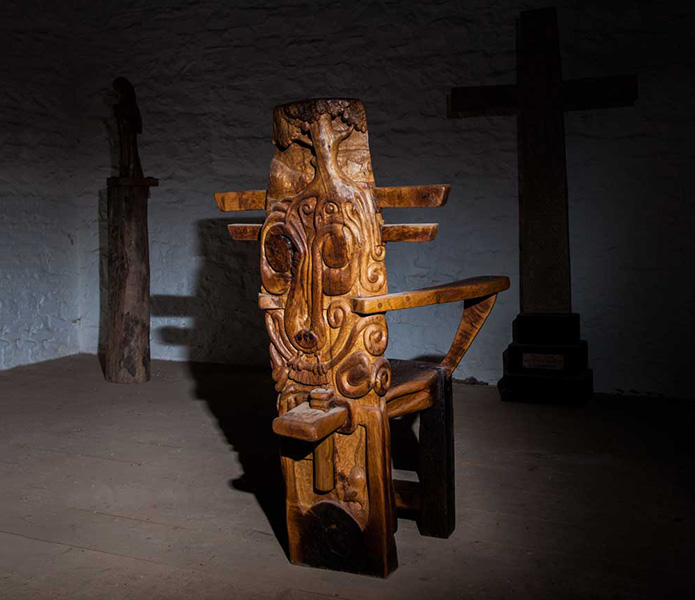
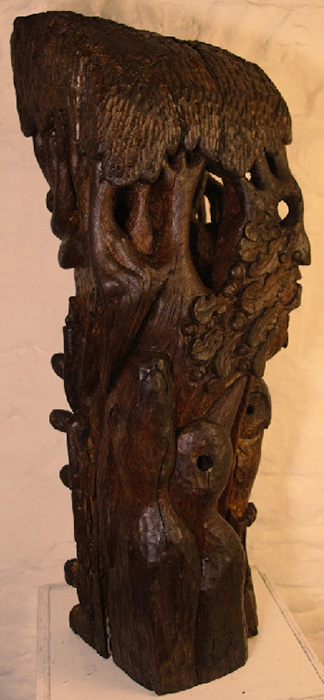
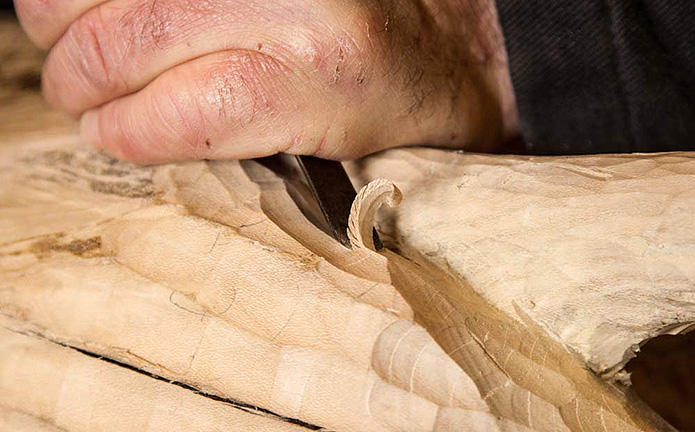
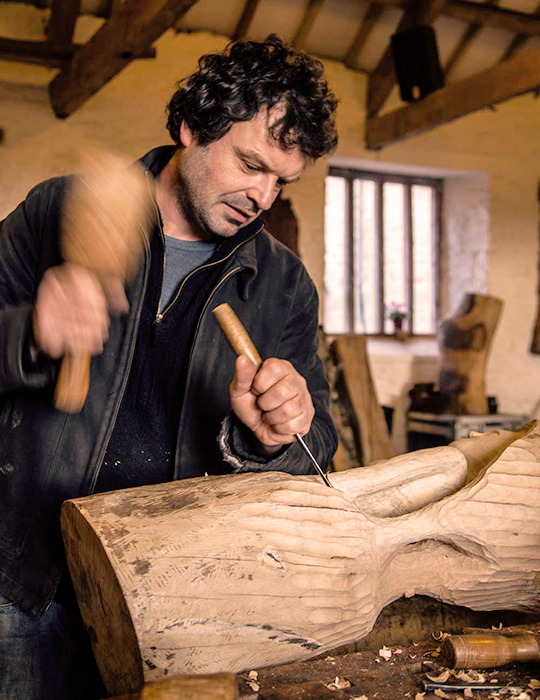
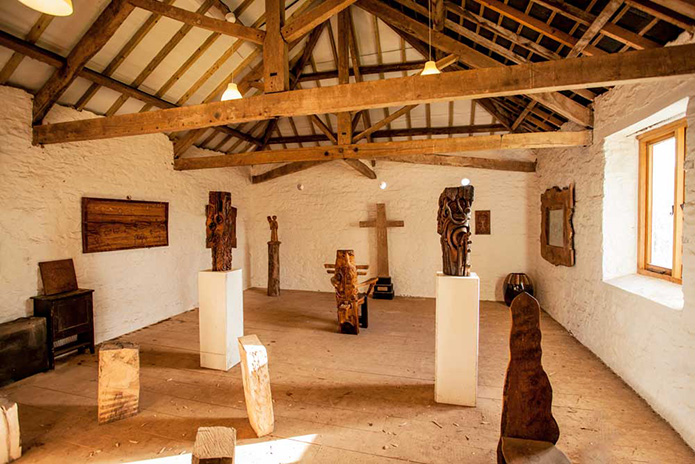
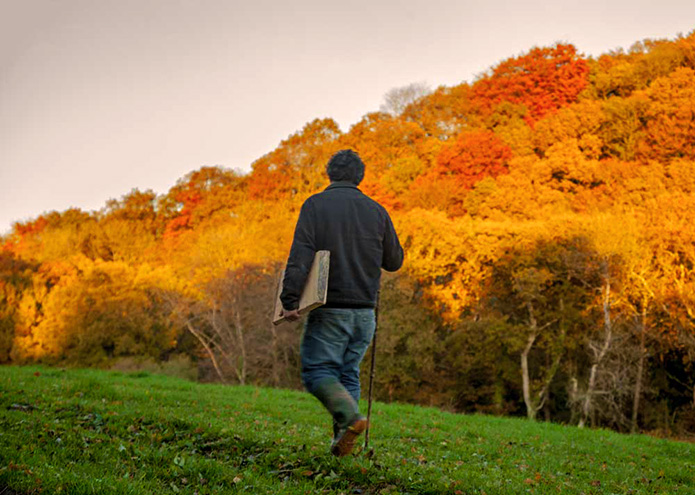









Thursday, April 23rd 2020 at 4:54 am
[…] Download Plan More @ http://www.merchantandmakers.com […]